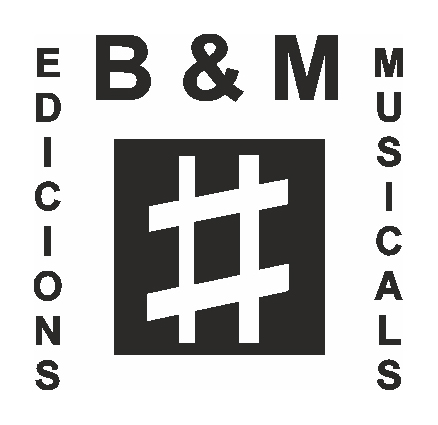Descripción
Autor
Formato
Instrumentación
Duración
Páginas
Año de composición
ISMN
Ref.
A Song for the Wind was born thanks to a proposal by pianist Albert Nieto, with whom I have collaborated many times and who has given such inspired performances of my works for piano. After having published a CD of my entire piano repertoire with him, Albert encouraged me to write a concerto for piano and symphonic band. He offered the opportunity to show it to Salvador Brotons. That is how the work was premiered on March 11, 2015 at the Auditori de Barcelona, by the Municipal Band of Barcelona conducted by Salvador Brotons with Albert Nieto on the piano. The performance of the pianist was brilliant and exemplary, capturing the rhythmic pulse of the whole work along with the percussion section.
Written in a single movement, A Song for the wind has a tripartite structure and lasts for 22′ 30». The title, «A Song for the Wind» plays with the polysemy referring to the instrumental group formed mainly by wind instruments, such as the band, and the wind itself, where the melodies fly free and light, weaving rich counterpoints of danceable sound levels. In the words of Martínez Andreu Miret, in the article «La nau del vent solcant les ones» published in the cultural online journal Núvol: «A variability that emphasized the multiple meanings of the air, between seduction and mysticism. Bursts filtering through the cracks in the walls of a hidden city in the metropolis, and they take us flying into the intimacy of a living room, wtih clandestine steps in the ostinato»Barcelona, April 24, 2015).
After a brief introduction by a clarinet and a saxophone with the piano, the band then plays in jazz-band style, proposing solo dialogues between different instruments within a concept of a chamber ensemble. This first part, which has itself a reexpositive tripartite structure, leads us to the main theme of the piece, which is also introduced by the piano. Here many elements from jazz, tango and bossa nova styles merge, and styles as different as symphonic, chamber and soloist music are combined. The melody and the rhythmic pulse are present at all times, with the interventions of the piano and the band alternating, and weaving a largely contrapuntal texture with passages of notable difficulty in the elaboration of the musical discourse. After the appearance of a wide variety of themes which follow one after another, we reach the central part, where there is a complete change of character. At this point, a post-Romantic lyricism pervades the music. This part also reflects a tripartite structure, briefly alternating the lyrical theme with a casual theme, such as a distorted waltz. The piano accompanies a succession of solos by various instruments which compile a single melody, and after the harp takes over the theme of the waltz, the band exploits the dramatic intensity of this theme in full force, building up to one of the culminating points of the work. The main theme is then re-exposed, as in the beginning, alternating with several secondary themes which are now presented in an enriched form, with a rhythmic and tonal intensity in crescendo culminating in a grand finale.

















No hay valoraciones aún.